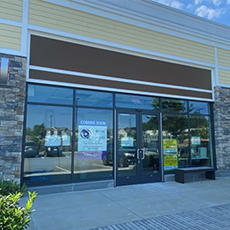Premium Lens Options
Understanding Intraocular Lens (IOL) Technology
The two structures of the eye that focus light and allow for perfect vision are the cornea and the lens. In LASIK, the cornea is manipulated to eliminate refractive errors. In cataract surgery or refractive lens exchange, the lens of the eye is manipulated to eliminate refractive errors. Like the lens of a camera, the eye’s natural lens can change its focus and allow us to see objects up close, a process called “accommodation.” Therefore, when the natural lens is replaced by an artificial IOL, it had traditionally been limited to allowing clear vision at only one distance. This technology is known as a non-accommodating “monofocal” IOL.
With the latest advances, having clear vision at only one distance is a thing of the past! Premium IOL technology can not only correct impaired distance vision, but also maintain the eye’s focusing power for reading and computer work.
Take the Premium Lens Self Evaluation Test
Multifocal IOLs
Multifocal IOLs are typically made up of concentric circles that allow for multiple points of focus at farther, intermediate, and near distances. As with standard IOLs, a multifocal IOL also replaces the natural lens or cataract. However, the multifocal design provides patients with the ability to see images clearly at a number of distances, not just one as with a standard IOL.
For the vast majority of patients, having a multifocal lens implant means that you will be able to see at distance, up close, and everywhere in between, without being dependent on glasses. Patients choosing to have a multifocal lens implant will likely find that they can drive, watch television, read or do crafts without the need for glasses.
Below are the different multifocal IOLs currently approved by the FDA.
Your surgeon will discuss which is likely to best suit your individual needs and provide you the most personalized correction of your vision.
Learn more about Multifocal IOLs
Accommodating IOLs
Accommodating IOLs are also designed to provide a continuous range of vision for farther, intermediate, and near distances, eliminating or reducing patients’ dependence on reading glasses or bifocals. This is made possible by the IOL’s unique design structure, which allows the lens to move back and forth as it would during natural focusing of the eye. When viewing distant objects, the internal muscles of the eye remain in a relaxed state and maintains the lens in a position to provide perfect distance vision. As the internal muscles of the eye contract during periods of reading, the visual portion of the lens is moved forward shifting ones’ focus to the near tasks.
Currently, the first and only FDA-approved accommodating IOL is the Crystalens. Your surgeon will be able to discuss whether an accommodating IOL is the right choice for your visual needs.
Learn more about Accommodating IOLs
Toric IOLs
Toric IOLs are lenses that provide correction of astigmatism in order to allow for clear vision without a pair of glasses. All other IOLs do not provide correction of astigmatism such that a patient would require glasses if they had a significant amount of astigmatism in their eye. With a toric IOL, astigmatism can be corrected, allowing for the clearest possible vision. One must keep in mind that Toric IOLs are monofocal lenses. Thus, toric IOLs are not capable of providing both distance and near vision correction without glasses, but they are an excellent alternative for patients with significant amounts of astigmatism.
Learn more about Toric IOLs
Meet Our Team
The Lexington Eye Associates team is led by board-certified doctors considered to be leaders in the field of ophthalmology. Get to know us.
If you have questions or would like to book an appointment, please call (781) 876-2020 request your consultation.














